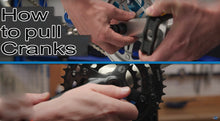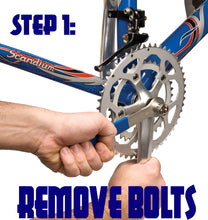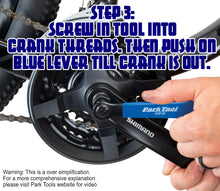
"Sunlite Steel One Piece Crankarm: Durability and Reliability for Your Ride"
Introduction
Every cyclist knows that the performance of their bike depends on the quality of its components. When it comes to the crankset, the Sunlite Steel One Piece Crankarm is a trusted choice for those who prioritize durability and reliability. In this article, we'll explore the features of the Sunlite Steel One Piece Crankarm and explain why Live4Bikes is the perfect place to purchase this dependable component.
The Backbone of Your Bike
The crankset is the heart of your bicycle, responsible for translating your pedal strokes into forward motion. It's essential to choose a crankset that can withstand the rigors of daily riding. The Sunlite Steel One Piece Crankarm is designed to provide the necessary strength and durability for a wide range of cycling activities.
Key Features of the Sunlite Steel One Piece Crankarm
-
Solid One-Piece Design: The Sunlite Steel One Piece Crankarm is crafted from a single piece of steel, eliminating the vulnerabilities associated with multi-piece cranksets. This robust design enhances the crankarm's durability and stability.
-
Optimal Length: With a length of 6-1/2 inches (165mm), this crankarm provides a balanced platform for pedaling, ensuring efficient power transfer to your bike's drivetrain. The length is suitable for various types of cycling.
-
Standard 24 TPI (Threads per Inch): The crankarm features standard threads with 24 TPI, making it compatible with most bottom brackets and pedals. This simplifies installation and maintenance, ensuring you can easily find compatible components.
-
Sleek Black Finish: The black finish not only adds a touch of style to your bike but also provides a protective layer against corrosion and wear. The durable finish ensures the longevity of your crankarm.
Why Choose Live4Bikes for Your Sunlite Steel One Piece Crankarm
-
A Wide Selection for All Cyclists: Live4Bikes serves the needs of a diverse range of cyclists, from casual riders to enthusiasts. Their extensive inventory ensures you can find the right components for your specific cycling requirements.
-
Expert Assistance and Customer Support: Live4Bikes prides itself on its knowledgeable staff who can guide you in selecting the right components for your bike. Their expertise ensures that you make informed decisions, regardless of your level of cycling experience.
-
Competitive Pricing: Live4Bikes offers competitive prices, delivering excellent value for your investment. Their components are affordable, allowing you to enhance your bike's performance without straining your budget.
-
Convenient Online Shopping: Live4Bikes provides the convenience of online shopping, allowing you to explore their product range and make purchases from the comfort of your home. The secure online ordering system ensures a hassle-free buying experience.
Conclusion
The Sunlite Steel One Piece Crankarm is a testament to durability and reliability, making it an essential component for cyclists who demand robustness in their riding experience. When considering where to purchase this dependable part, Live4Bikes is the ideal choice for cycling enthusiasts. With their extensive range of components, expert staff, competitive pricing, and online convenience, you can confidently enhance your cycling adventures. Trust Live4Bikes to provide the backbone of your bike, ensuring that every pedal stroke counts and your ride remains dependable and enjoyable.
 |

|
 |
 |
- More Crank info
- DIY TIPS
- Minimize Windows
Understanding Bicycle Cranks: Types, Sizes, and Materials
Introduction
Bicycle cranks are a crucial component of a bike's drivetrain, responsible for transferring the rider's pedaling force to the chainring, which in turn propels the bicycle forward. In this article, we'll explore the various types of bicycle cranks, different sizes available, and the materials they are constructed from.
Types of Bicycle Cranks
-
Square Taper Cranks:
Square taper cranks are a traditional design, characterized by a square-shaped spindle that fits into the bottom bracket. They have been a standard for many years, known for their simplicity and durability. However, they are becoming less common with the rise of newer technologies.
-
Octalink Cranks:
Shimano introduced the Octalink system, which features eight splines on the crank arm that interface with a matching bottom bracket. Octalink cranks are known for their increased stiffness and power transfer compared to square taper cranks.
-
ISIS Drive Cranks:
ISIS (International Splined Interface Standard) drive cranks use a splined interface between the crank arm and the bottom bracket spindle. This design was intended to improve stiffness and durability, but it has been largely replaced by newer standards.
-
External Bearing Cranks:
External bearing cranks, also known as Hollowtech II (by Shimano) or GXP (by SRAM), use outboard bearings that sit outside of the bottom bracket shell. This design provides increased stiffness and weight savings.
-
Direct Mount Cranks:
Direct mount cranks have become popular in recent years, especially in the mountain biking community. They attach directly to the spindle, eliminating the need for a separate chainring spider. This design allows for a wider range of chainring sizes and improved stiffness.
Different Sizes of Bicycle Cranks
-
Crank Arm Length:
Crank arm length is measured from the center of the bottom bracket spindle to the center of the pedal spindle. Common lengths range from 165mm to 180mm. Shorter crank arms can provide a more aerodynamic position and are favored by some cyclists, while longer crank arms may offer more leverage for powerful pedaling.
-
Chainring Sizes:
The size of the chainring(s) on the crankset can significantly affect the bike's gearing. Smaller chainrings provide easier pedaling but lower top speeds, while larger chainrings offer higher top speeds but require more effort to pedal.
Materials Used in Bicycle Cranks
-
Aluminum:
Aluminum cranks are lightweight, relatively inexpensive, and offer good stiffness. They are popular in entry-level and mid-range bicycles.
-
Carbon Fiber:
Carbon fiber cranks are known for their exceptional strength-to-weight ratio. They offer excellent stiffness and can help reduce overall weight, making them popular among high-end and performance-oriented cyclists.
-
Steel:
Steel cranks are durable and cost-effective but tend to be heavier than aluminum or carbon fiber options. They are commonly found on budget-friendly and commuter-oriented bikes.
-
Titanium:
Titanium cranks strike a balance between weight, strength, and durability. They are relatively lightweight and offer excellent corrosion resistance, making them a premium choice for some cyclists.
Conclusion
Choosing the right bicycle crank is essential for optimizing your riding experience. Consider factors like the type of riding you'll be doing, your personal preferences, and your budget when selecting a crankset. Understanding the different types, sizes, and materials available will help you make an informed decision that suits your specific cycling needs.
```Comprehensive Guide to Removing a Square Taper Bicycle Crank
Tools Needed:
- Crank puller tool (compatible with square taper cranks)
- Allen wrench or socket wrench set
- Bottom bracket tool (if necessary)
- Grease (optional)
- Rag or cloth (to clean and wipe parts)
Step-by-Step Guide:
-
Prepare Your Workspace:
Start by finding a clean, well-lit area to work. Lay down a rag or cloth to catch any dirt or small parts that may fall.
-
Gather Tools:
Ensure you have all the necessary tools listed above.
-
Prepare the Bike:
If you have a derailleur, shift the chain onto the smallest chainring to provide easier access to the crankset. If you have a single-speed or fixed-gear bike, you don't need to worry about this step.
-
Remove the Crank Bolts:
Use an Allen wrench or socket wrench to loosen and remove the bolts that hold the crank arms onto the bottom bracket spindle. There are usually two bolts, one on each side.
-
Use the Crank Puller:
Insert the inner part of the crank puller tool into the bottom bracket spindle. Make sure it's threaded securely. Then, thread the outer part of the tool into the crank arm threads. Tighten the outer part of the crank puller tool until the crank arm starts to come off the spindle.
-
Remove the Crank Arm:
Continue to turn the crank puller until the crank arm comes off the spindle. Be sure to support the crank arm with your hand as it comes free to avoid it falling and potentially damaging the ground or other components.
-
Repeat for the Other Side:
If you're removing both crank arms, repeat steps 4-6 for the other side.
-
Inspect and Clean:
Take this opportunity to inspect the bottom bracket and crankset for any signs of wear or damage. Clean the spindle and bottom bracket shell if necessary.









